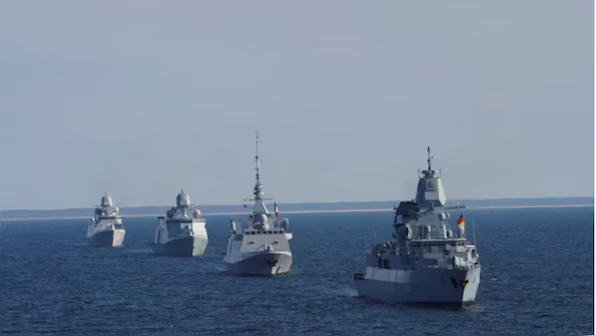News Flash
News Flash

COPENHAGEN, Feb 14, 2025 (BSS/AFP) - Under steel grey skies, the Dutch minehunting vessel Schiedam cuts through the waters dividing Denmark and Sweden, part of NATO's Baltic Sentry mission to protect underwater infrastructure in the Baltic Sea.
NATO hastily pulled together the patrol mission last month after several electricity and telecommunications cables were severed on the Baltic Sea floor in recent months.
Those incidents came amid soaring tensions between the West and Russia over Moscow's war in Ukraine, exacerbated by Finland and Sweden subsequently joining NATO.
Many European officials and experts suspect the cable cuts are acts of sabotage, part of a Russian "hybrid war" against Ukraine's Western allies.
The Schiedam's captain, Sander Klop, said NATO's beefed up presence in the Baltic was aimed at guaranteeing security in a sea now bordered entirely by NATO members, with the exception of Russia.
"Our intention is to de-escalate the situation, to make sure that the infrastructure is safe and that all the surrounding countries have their internet and their fossil fuels," he told AFP.
'Out of the ordinary'
In the Schiedam's control room, the crew monitor screens hooked up to surveillance equipment normally used to detect mines.
"We're looking for anything that is suspicious and out of the ordinary," said Bas, an officer on lookout duty.
On board this vessel -- as on the hydrographic ship Luymes which normally maps the seabed -- crew members are allowed to talk to journalists, but only captains may disclose their full names.
Initially intended to serve as the "control tower" of the operation, the Luymes and its measuring and surveillance instruments have been put to work.
"Now we're really looking at differences, especially on cables, on pipelines, to see if there is any damage," explained Leonie, a watch officer and head of logistics on board the Dutch vessel. "If something happens, then we have footage from how it used to be."
"We also do patrolling... to see if there is any suspicious behaviour from other ships," added the 29-year-old woman.
Captain Erik Kockx, head of the mission's Mine Countermeasures Group, said Baltic Sentry's patrols had already proved a success.
There have been no malicious acts since the start of the operation.
"It is impossible to prevent all sabotage... But not doing anything is not an option," he said.
"Almost every day we see behaviour of ships that is questionable," including unexpected stops.
"If a ship is undertaking a voyage between two ports, it's not normal that it stops for a longer time, especially not if the place where it stops is right above critical infrastructure.
"Then we immediately go there, and we at least monitor what is happening."
Another red flag would be the absence of an anchor, his colleague on the Schiedam, Sander Klop, added.
Ships are suspected of dragging their anchors on the sea floor to sever cables.
In the case of the Eagle S ship in Finland, its anchor came off after dragging it for 10 kilometres (6.2 miles), and was retrieved by the Swedish coast guard.
"If we see a ship without an anchor, that's the equivalent of a car without a headlight... That's a trigger for us to start asking questions," Klop said.
Chilly dives
At the bridge of the minehunter, the crew pass around binoculars to keep a close eye on the few ships that cross their path on a freezing cold February day.
To monitor what's going on far below the surface, they use a Seafox, an underwater drone hooked up to the ship with a fibre-optic cable.
It can approach an object to within one metre (yard), but to really study details up close, divers are sent down.
"There are things we want to see with our own eyes," said Remco, suited up and ready to plunge into the chilly four degree Celsius (39 Fahrenheit) water.
If malicious behaviour is suspected, the Baltic Sentry patrol boats make their presence known and report the suspected vessel to relevant authorities in the country whose infrastructure may be affected and where the act is taking place.